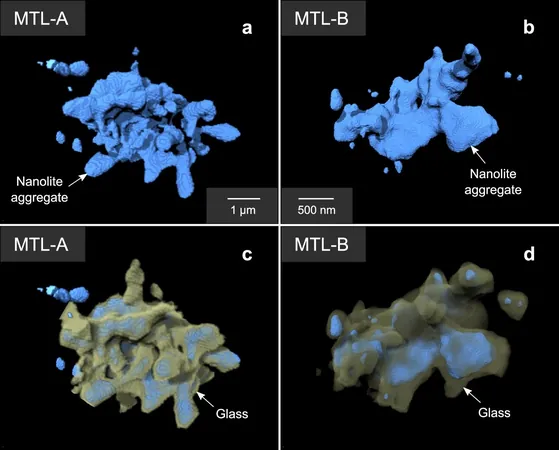
Breakthrough Study Reveals Lumateperone's Promise for Depression and Anxiety
2025-09-21
Author: John Tan
Game-Changing Results in Depression Treatment
Exciting new phase 3 study results show that lumateperone (Caplyta) could be a powerful adjunct to traditional antidepressant therapy for individuals battling major depressive disorder (MDD) and anxious distress. This landmark study, dubbed Study 501, demonstrated significant improvements in patients' mental health, as gauged by the Montgomery-Asberg Depression Rating Scale (MADRS).
Who Was Involved?
The clinical trial included a diverse group of 481 adults, aged 18 to 65, struggling with MDD after not finding relief from one or two previous antidepressant treatments. Participants exhibited notably severe depressive symptoms, contrary to typical responses expected from conventional therapies.
Impressive Efficacy on Display
Patients were randomly assigned to receive either a 42 mg dose of lumateperone alongside their usual antidepressants or a placebo for six weeks. Results were eye-opening: the group receiving lumateperone demonstrated significantly greater improvements in MADRS scores compared to the placebo group. By day 15, the improvements achieved statistical significance, showcasing the drug's rapid impact.
A Dual Victory Over Depression and Anxiety
Lumateperone not only helped alleviate depressive symptoms but also addressed anxious distress effectively, as indicated by superior results in the General Anxiety Disorder 7 (GAD-7) scores. Nearly half of the participants entered the study with anxious distress over and above their depressive symptoms, and the drug proved particularly beneficial for this subgroup.
Safety and Endorsements
Importantly, lumateperone maintained a favorable safety profile throughout the study, making it a viable option for individuals who had previously struggled to find relief with traditional therapies. As one of the lead investigators pointed out, 'These results highlight lumateperone 42 mg as a promising new treatment avenue for adults with MDD and anxious distress who have not adequately responded to existing antidepressant therapies.'
Lumateperone's Unique Mechanism
Already approved by the U.S. FDA for the treatment of schizophrenia and depressive episodes in bipolar disorder, lumateperone operates through an innovative mechanism of action that targets serotonin, dopamine, and glutamate pathways, offering a new lifeline for those feeling trapped by their mental health conditions.
Conclusion: A Beacon of Hope
As evidence mounts about the efficacy of lumateperone as an adjunctive therapy, it brings fresh hope to millions struggling with MDD and anxiety. The clinical significance of this study could pave the way for widespread changes in treatment protocols, offering renewed optimism for those who have faced disappointment with traditional antidepressant approaches.




 Brasil (PT)
Brasil (PT)
 Canada (EN)
Canada (EN)
 Chile (ES)
Chile (ES)
 Česko (CS)
Česko (CS)
 대한민국 (KO)
대한민국 (KO)
 España (ES)
España (ES)
 France (FR)
France (FR)
 Hong Kong (EN)
Hong Kong (EN)
 Italia (IT)
Italia (IT)
 日本 (JA)
日本 (JA)
 Magyarország (HU)
Magyarország (HU)
 Norge (NO)
Norge (NO)
 Polska (PL)
Polska (PL)
 Schweiz (DE)
Schweiz (DE)
 Singapore (EN)
Singapore (EN)
 Sverige (SV)
Sverige (SV)
 Suomi (FI)
Suomi (FI)
 Türkiye (TR)
Türkiye (TR)
 الإمارات العربية المتحدة (AR)
الإمارات العربية المتحدة (AR)